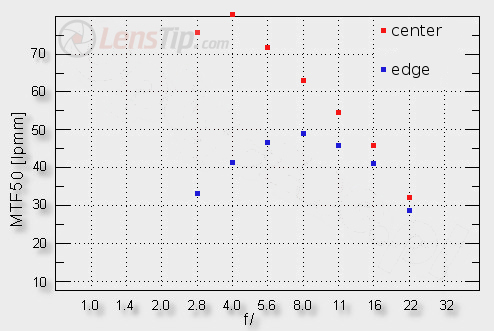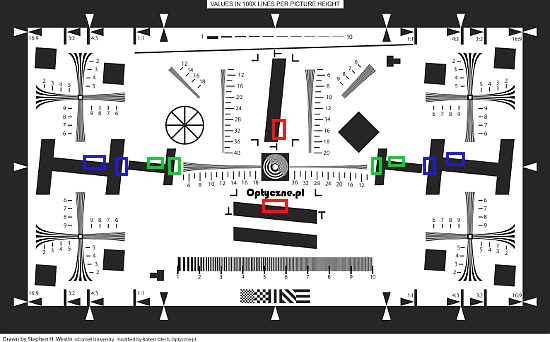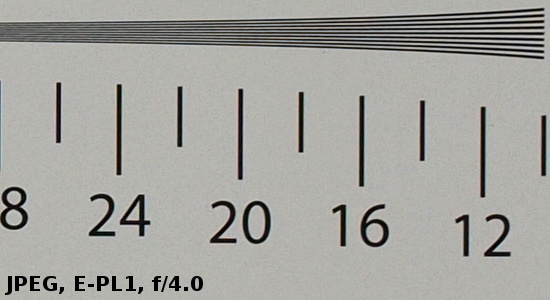Panasonic Leica DG Macro-Elmarit 45 mm f/2.8 ASPH. M.O.I.S.
4. Image resolution
The Micro 4/3 optics we have been testing lately on the Olympus E-PL1 body because dcraw doesn’t have any problems with processing its RAW files and additionally they seem to be devoid of any extra interference; also the strength of its AA filter (or lack of thereof) seems to be the same for both coordinates. These properties make the tests, performed on this body, objective and easily comparable.
After the tests of Panasonic „pancakes” with focal lengths of 14 mm and 20 mm it seemed that in this case the decency level is positioned near 42 lpmm and the best „primes” will exceed slightly the value of 75 lpmm.
Please Support UsIf you enjoy our reviews and articles, and you want us to continue our work please, support our website by donating through PayPal. The funds are going to be used for paying our editorial team, renting servers, and equipping our testing studio; only that way we will be able to continue providing you interesting content for free. |
- - - - - - - - - - - - - - - - - - - - - - - - - - - - - - - - - - - - - - - - - - - - - - - -
However, in many systems macro lenses are exactly these devices which can break resolution records. Small wonder we were very interested in the result of the Leica DG Macro-Elmarit 45 mm f/2.8 ASPH. MEGA O.I.S model and for more than one reason. First it is a macro lens, second it is a Leica after all, third, we deal here with a lens with normal dimensions so the size was not a limitation for the constructors.
Let’s check how the Leica performed in our tests. The results we got in the centre and on the edge of the frame are presented below. Measurement errors ranged from 0.2 to 1.1 lpmm.

When it comes to the frame centre only one word comes into mind – revelation. Already at the maximum relative aperture the lens reaches the result slightly over 75 lpmm and on stopping down the aperture by one stop it exceeds slightly 80 lpmm. This performance is worthy of the best macro lenses tested by us and really absolutely beyond reproach.
The situation on the edge of the frame is a bit different though. At the maximum relative aperture we are below the decency level and to go near it we must stop down the lens by more than 1 EV. What’s more, there’s a blatant difference between the results we saw in the frame centre, which are sensational, and the results on the edge, which are average.
This discrepancy made us wonder so much that we decided to check the resolution profile for the whole frame more closely. To do so we used additional resolution measurement areas which are handy for full frame lenses’ tests. Let’s remind here how our resolution tests chart looks like.

The measurements taken in the frame centre and on the edge of the frame, presented earlier, were determined by averaging out different results coming from areas marked in red and blue. Additionally we decided to check the performance of the lens in the place marked in green. The results are much better because at the maximum relative aperture they exceed 41 lpmm, by f/4.0 they reach almost 51 lpmm and by f/5.6 – over 56 lpmm. As you can see the resolution is weak only on the very edge and most of the frame (not only near the centre) is fully useful even wide open.
One more thing is worth noticing here. The resolution results we got on the smallest test chart could be even by 10% better than those from bigger charts. As in the case of the small chart we take photos from a closer distance it means that the lens, as it befits a very good macro instrument, is optimized to work near the magnification scale of 1:1 or 1:2 and it reaches the peak of its possibilities exactly there.
 |






